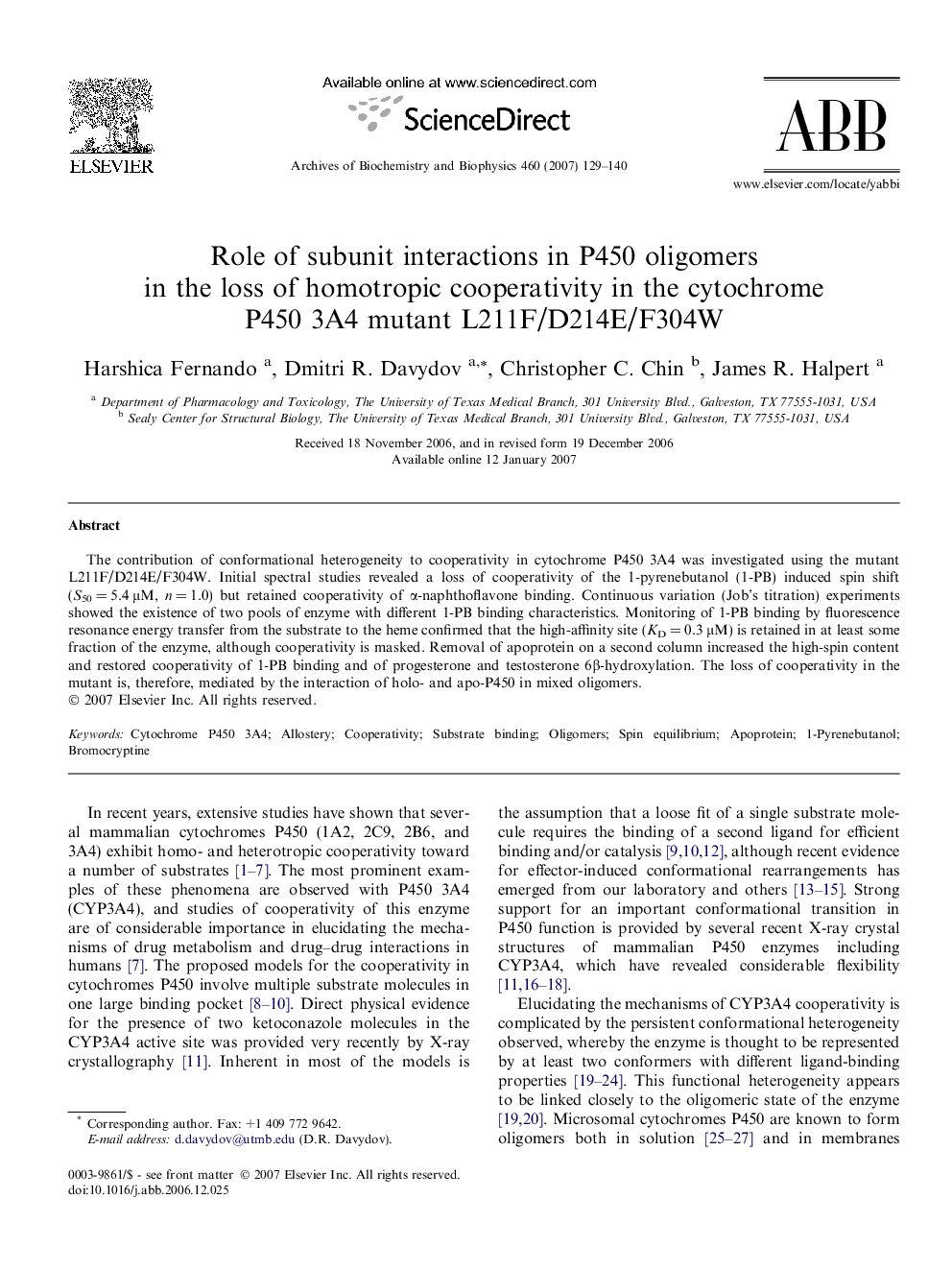| Article ID | Journal | Published Year | Pages | File Type |
|---|---|---|---|---|
| 1927248 | Archives of Biochemistry and Biophysics | 2007 | 12 Pages |
The contribution of conformational heterogeneity to cooperativity in cytochrome P450 3A4 was investigated using the mutant L211F/D214E/F304W. Initial spectral studies revealed a loss of cooperativity of the 1-pyrenebutanol (1-PB) induced spin shift (S50 = 5.4 μM, n = 1.0) but retained cooperativity of α-naphthoflavone binding. Continuous variation (Job’s titration) experiments showed the existence of two pools of enzyme with different 1-PB binding characteristics. Monitoring of 1-PB binding by fluorescence resonance energy transfer from the substrate to the heme confirmed that the high-affinity site (KD = 0.3 μM) is retained in at least some fraction of the enzyme, although cooperativity is masked. Removal of apoprotein on a second column increased the high-spin content and restored cooperativity of 1-PB binding and of progesterone and testosterone 6β-hydroxylation. The loss of cooperativity in the mutant is, therefore, mediated by the interaction of holo- and apo-P450 in mixed oligomers.
